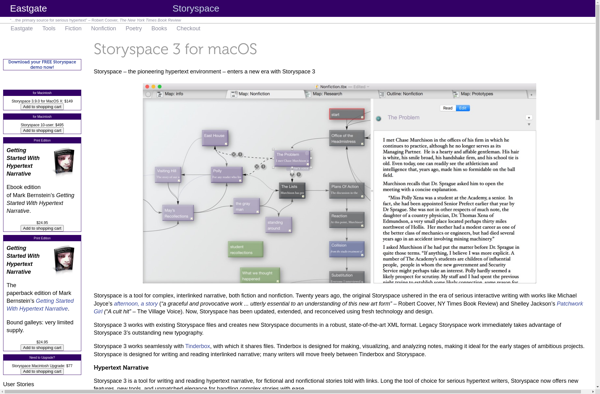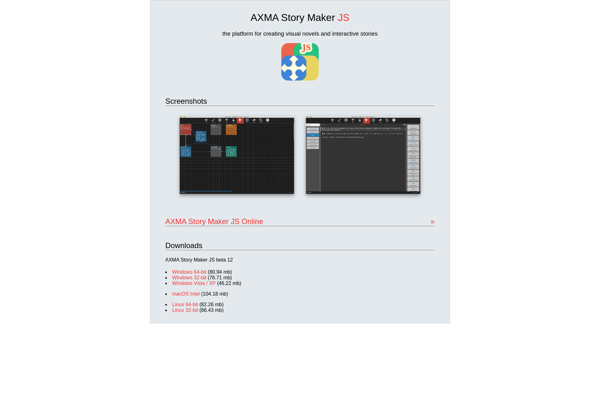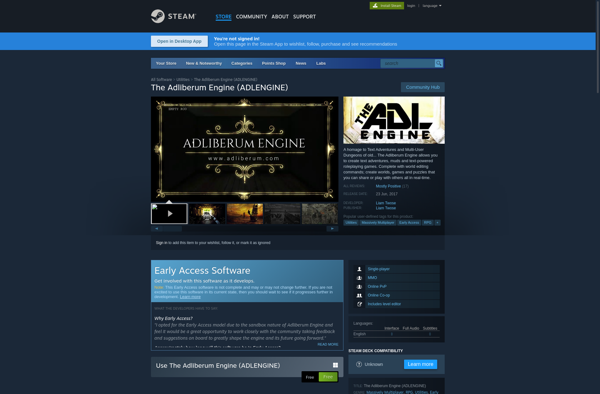Storyspace

Storyspace: Nonlinear Writing Software
Nonlinear writing software originally created in the 1980s for hypertext fiction and interactive narratives, allowing authors to link stories and ideas in nonlinear ways.
What is Storyspace?
Storyspace is a specialized software tool originally created in the 1980s for writing and reading interactive and nonlinear narratives, known as hypertext fiction. It was developed by Jay David Bolter, Michael Joyce and John B. Smith and published by Eastgate Systems.
Storyspace allows authors to create a web of textual fragments, or lexias, that are connected by hyperlinks. Readers can then follow different pathways through this web, exploring the story and its possibilities in a nonlinear fashion. The lexias can contain text, images, audio, and more. Popular early Storyspace works include Michael Joyce's afternoon, a story and Shelley Jackson's Patchwork Girl.
As a dedicated hypertext authoring system, Storyspace provides a range of specialized tools for managing links, visualizing story structures, and publishing to the Web, print or disk. While it is less commonly used today, Storyspace was highly innovative and influential in the early development of electronic literature and nonlinear writing.
Some key features include: a WYSIWYG editor optimized for writing lexias, tools for manually linking lexias and checking connectivity, map views for visualizing the story structure, annotations and notecards for organizing ideas, publish to HTML output, ebook format support, backlink navigation and analysis, version tracking and collaboration features.
While created for hypertext narrative, Storyspace could potentially be used for other forms of nonlinear and interactive writing. It runs on Mac and Windows computers. The latest version is Storyspace 3.
Storyspace Features
Features
- Allows linking passages of text together in nonlinear ways
- Provides graphical map view to visualize story structure
- Supports annotating and tagging text
- Collaborative editing and version control
- Export to HTML, RTF, PDF formats
Pricing
- One-time Purchase
- Subscription-Based
Pros
Cons
Official Links
Reviews & Ratings
Login to ReviewThe Best Storyspace Alternatives
Top Education & Reference and Writing Tools and other similar apps like Storyspace
AXMA Story Maker

ADLENGINE
